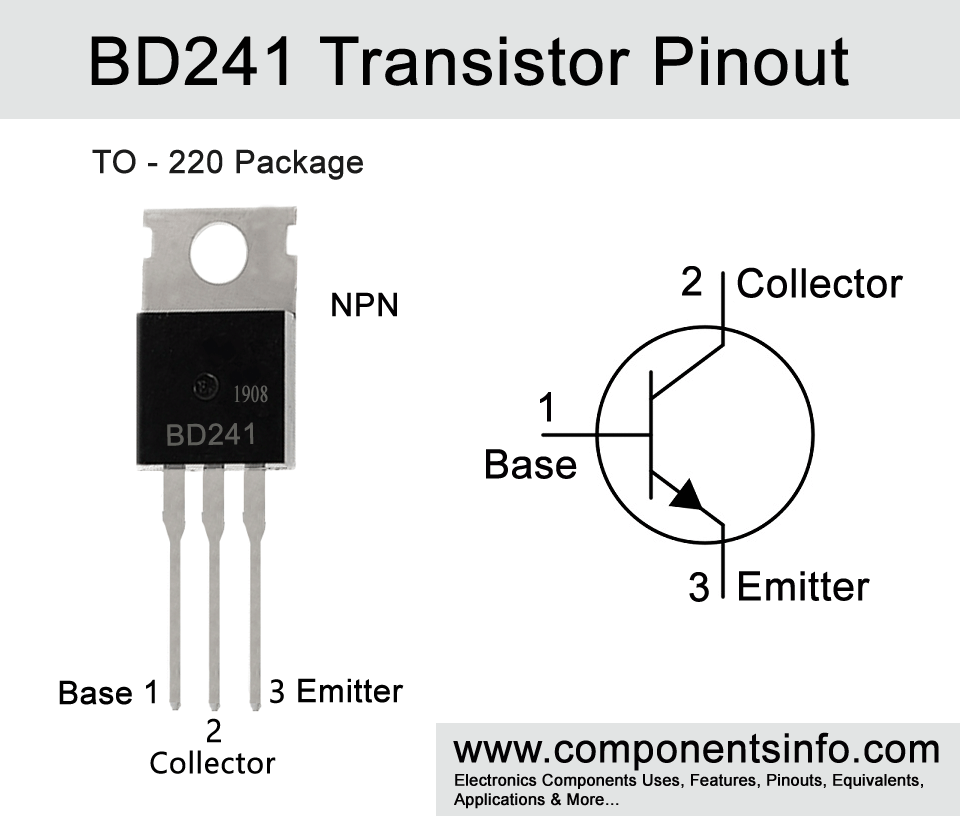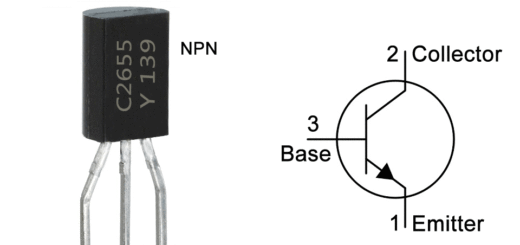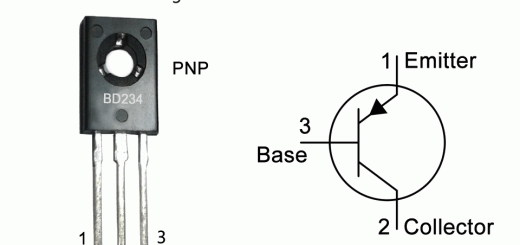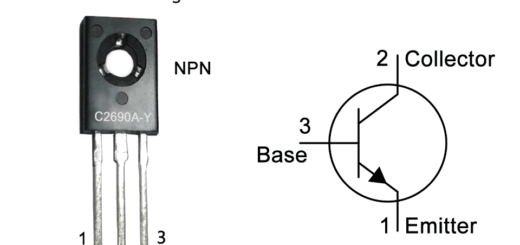BD241 Transistor Pinout, Features, Equivalent, Applications and Other Info
BD241 is a TO-220 package NPN transistor designed to use in switching and amplifier applications. In this post we are going to explore BD241 transistor pinout, features, equivalent, applications and other info.
Absolute Maximum Ratings:
- Package Type: TO-220
- Transistor Type: NPN
- Max Collector Current(IC): 3A
- Max Collector-Emitter Voltage (VCEO): 45V
- Max Collector-Base Voltage (VCBO): 55V
- Max Emitter-Base Voltage (VEBO): 5V
- Max Collector Power Dissipation (PC): 40W
- Minimum & Maximum DC Current Gain (hFE): 10 to 25
- Max Storage & Operating temperature Should Be: -65 to +150 Centigrade
PNP Complementary:
The PNP complimentary of BD241 is BD242
Replacement and Equivalent:
BD241A, BD241B, TIP131, TIP130, TIP121, TIP120, TIP101, TIP100, NTE152, BD951, BD947, BD937, BD935, BD933, BD899, BD897, BD895, BD807, BD797, BD737, BD645, BD537, BD535, BD533, BD301, BD243, BD203, 2SD857, 2SD856, 2SD837, 2SD743.
BD241 Transistor Explained / Description:
BD241 is a medium power transistor designed to use in switching and amplification applications. The transistor comes in TO-220 package, it has the maximum collector to emitter voltage of 45V, max collector to emitter voltage is 55 volts, max collector current is 3A, max peak collector current in pulse is 5A, max emitter-base voltage is 5V and max collector dissipation is 40W.
The BD241 transistor comes in four different versions which are BD241, BD241A, BD241B, and BD241C. The main difference between their versions is their collector-emitter voltage ratings. The BD241 has the lowest collector-emitter voltage rating which is 45V, BD241A has 60V, BD241B has 80V and BD241C has 100V. So if you are willing to replace these with one another then you must know the capacity of your load. If for example, your load requirement is around 60V then you cannot use BD241 & BD241A because their voltage ratings are greater or equal to 60V and for good performance of the transistor should have more collector-emitter voltage than the load.
These transistor also have complimentary transistors which BD242, BD242A, BD242B, BE242C.
Where We Can Use it & How to Use:
As mentioned above these transistor are designed for amplification and switching but can also be used in variety of other applications.
The using procedure of this transistor is same as we use any other BJT transistor.
Applications:
Relay drivers circuits
DC to AC Converters
Motor Drivers
Battery charger circuits
Audio Amplifiers
Battery discharging circuits
Power converter circuits
Dimmers
Temperature Control Circuits
Inverter Circuits
Variety of General Purpose Applications
Safe Operating Guidelines:
Here are some guidelines for using the transistor safely.
- Do not use the transistor to its absolute maximum ratings and always stay at least 20% below from these ratings.
- So the collector-emitter voltage is 45V but we will not go above 36V by selecting this transistor only for applications under 36V.
- The maximum collector current of the transistor is 3A so according to the above guideline of 20% we will drive load under 2.4A.
- The maximum limit of the temperature of the transistor is -65°C to 150°C so it should not be exposed to temperatures below -65°C and above 150°C.
Datasheet:
To download the datasheet just copy and paste the below link in your browser.
https://pdf1.alldatasheet.com/pdfjsview/web/viewer.html?file=//pdf1.alldatasheet.com/datasheet-pdf/view/50777/FAIRCHILD/BD241/+_07J8UwYhRDpKxHeHKzDz+/datasheet.pdf



